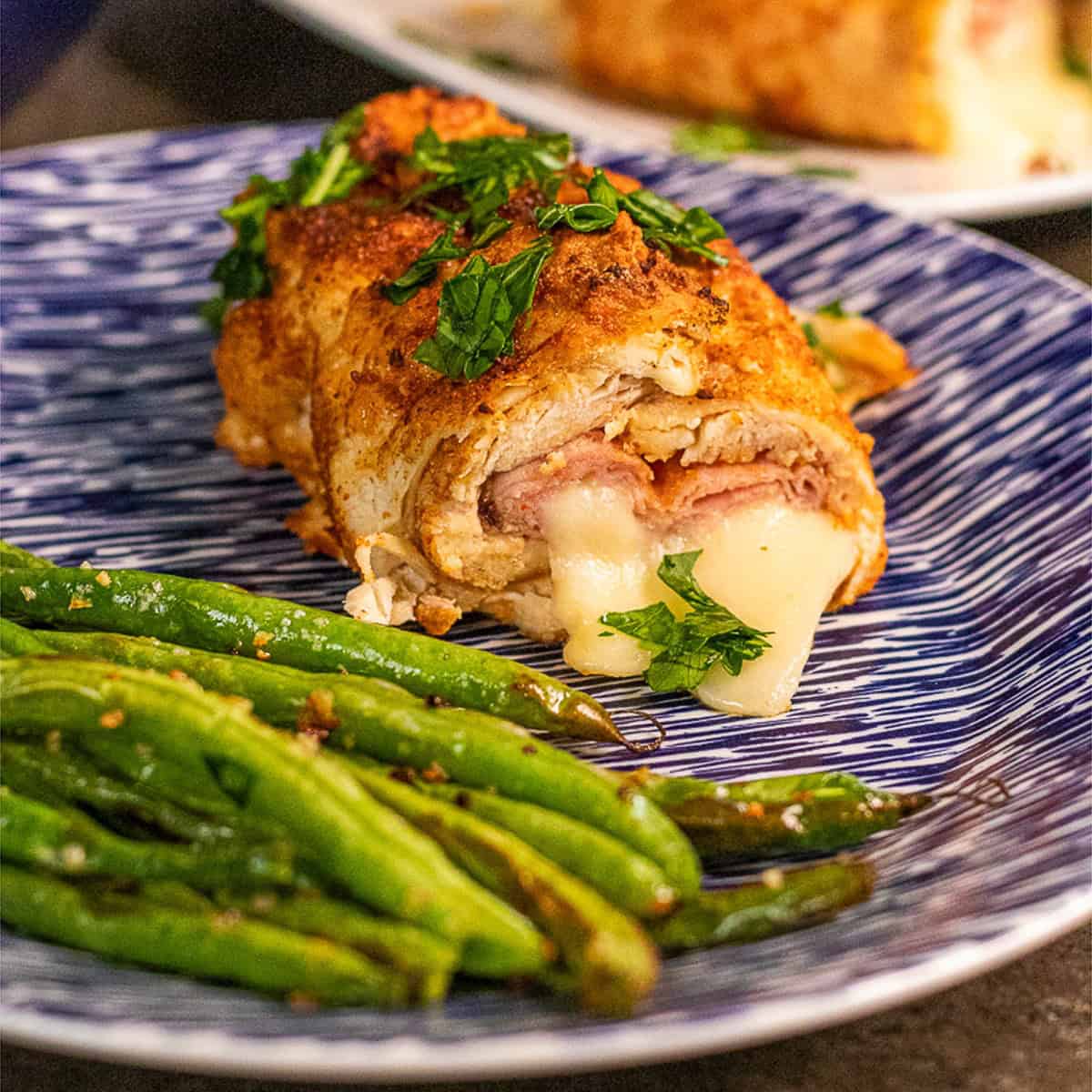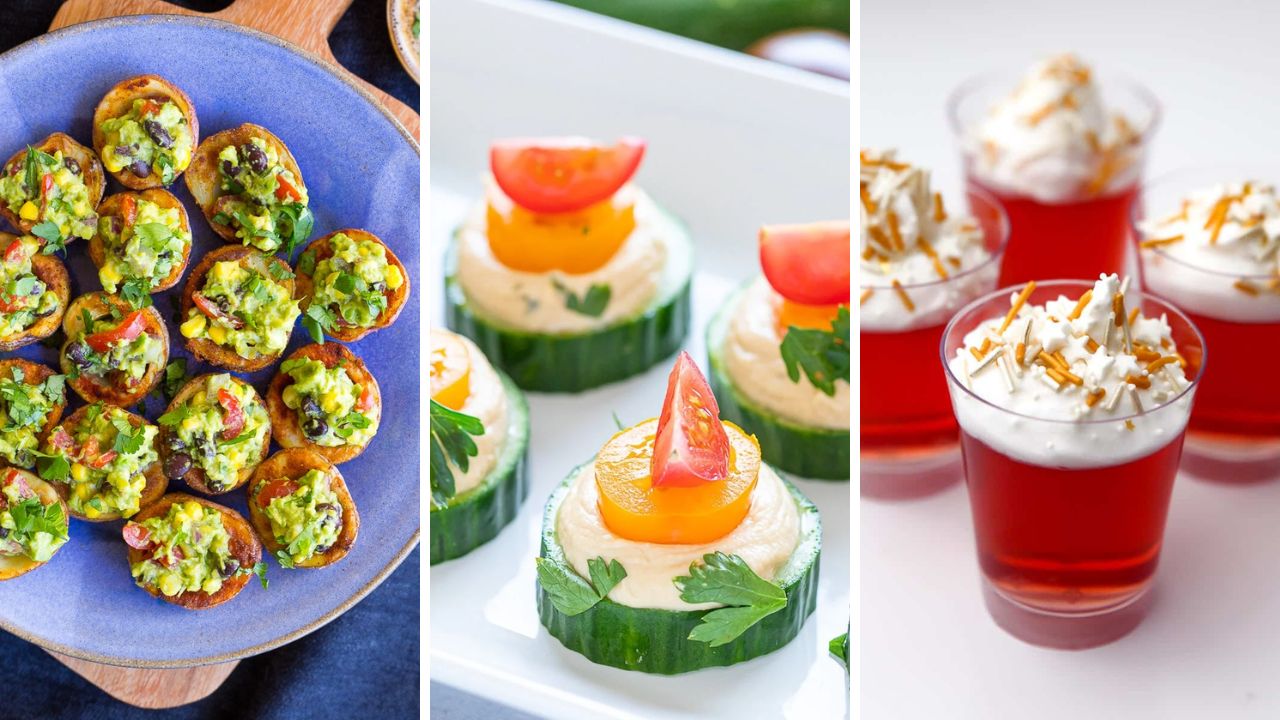Top 40 Wild Foods from Around the World
I’ve always believed one of the best things about traveling is the opportunity to try unique foods across the globe. Often, it’s all about letting go of what we consider “normal” and embracing a world of diverse delicacies. But where do we draw the line when it comes to adventurous eating?
Sit back and let us take you through 40 intriguing foods from around the world—are you bold enough to try them?
40.) Surströmming – Sweden

Photo from Unsplash
This is a Scandinavian classic of fermented herring that’s known for its intense smell. The fish is salted just enough to prevent it from rotting, allowing it to ferment instead. Once opened, the pungent aroma fills the air, so most Swedes eat it outdoors.
39.) Sannakji – South Korea

Photo from Unsplash
This dish is served raw, with live baby octopus tentacles cut into bite-sized pieces. The tentacles continue to wiggle on the plate, making it a thrilling (and somewhat dangerous) experience to eat due to the suction cups!
38.) Mopane Worms – Southern Africa

Photo from Unsplash
A protein-rich delicacy, these large, spiky caterpillars are typically fried or dried and enjoyed as a crunchy snack or side dish across Zimbabwe and South Africa.
37.) Tuna Eyeballs – Japan

Photo from AI
In Japan, nothing is wasted from tuna, including the eyeballs! These large, gelatinous eyes are boiled or steamed and typically served with garlic or soy sauce.
36.) Escamoles – Mexico

Photo from Youtube
Escamoles, or ant larvae, are often referred to as “insect caviar” in central Mexico. With a texture similar to cottage cheese and a nutty flavor, they’re typically served as taco or omelet fillings.
35.) Drunken Shrimp – China

Photo from Unsplash
This live shrimp dish is served soaked in alcohol (often baijiu), which makes them easier to eat as they’re mildly sedated. Diners eat the shrimp whole, often while they’re still twitching.
34.) Shirako – Japan

Photo from Youtube
This dish is the sperm sac of cod, anglerfish, or pufferfish. Despite its strange appearance, it’s said to have a delicate, custard-like taste.
33.) Fugu – Japan

Photo from Unsplash
Fugu is a famous Japanese delicacy made from pufferfish, which can be lethal if improperly prepared due to a toxin in the fish’s organs. Only licensed chefs can legally serve it in Japan.
32.) Kiviak – Greenland

Photo from Reddit
In Greenland, whole small birds called auks are placed inside a seal carcass, sealed, and left to ferment for several months. The resulting dish is eaten during the harsh winter months.
31.) Locusts – Israel and Other Countries

Photo from Unsplash
These crispy insects are fried or grilled and enjoyed in many parts of the Middle East and Africa, where they’re seen as a sustainable, protein-packed snack.
30.) Cobra Heart – Vietnam

Photo from Reddit
For the daring, this experience involves consuming a still-beating cobra heart in a shot of its blood, followed by rice wine.
29.) Witchetty Grubs – Australia

Photo from Reddit
In Indigenous Australian cuisine, these white larvae are consumed raw or roasted and are said to have a nutty flavor similar to almonds.
28.) Lundi (Puffin) – Iceland

Photo from Reddit
This national delicacy of Iceland is either boiled in milk sauce or smoked, showcasing the unique flavors of the Atlantic puffin.
27.) Hakarl – Iceland

Photo from Reddit
This fermented Greenland shark has a potent ammonia aroma. Aged underground and then hung to dry, it’s an experience only for the brave.
26.) Stinkheads – Alaska, USA
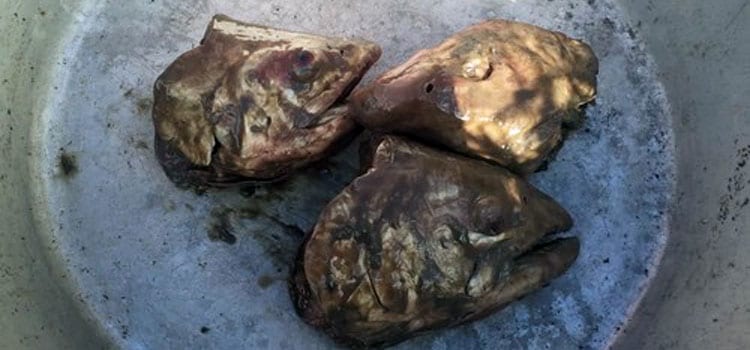
Photo from Reddit
A fermented head of king salmon, buried and left to ripen, creates this unusual (and pungent) delicacy in Alaskan Indigenous cuisine.
25.) Casu Marzu – Italy

Photo from Reddit
This Sardinian “maggot cheese” is a pecorino infested with cheese fly larvae, creating a soft texture that some enjoy (and many avoid).
24.) Fried Tarantulas – Cambodia

Photo from Unsplash
Once a survival food under the Khmer Rouge, deep-fried tarantulas have become a common street snack in Cambodia.
23.) Airag – Mongolia
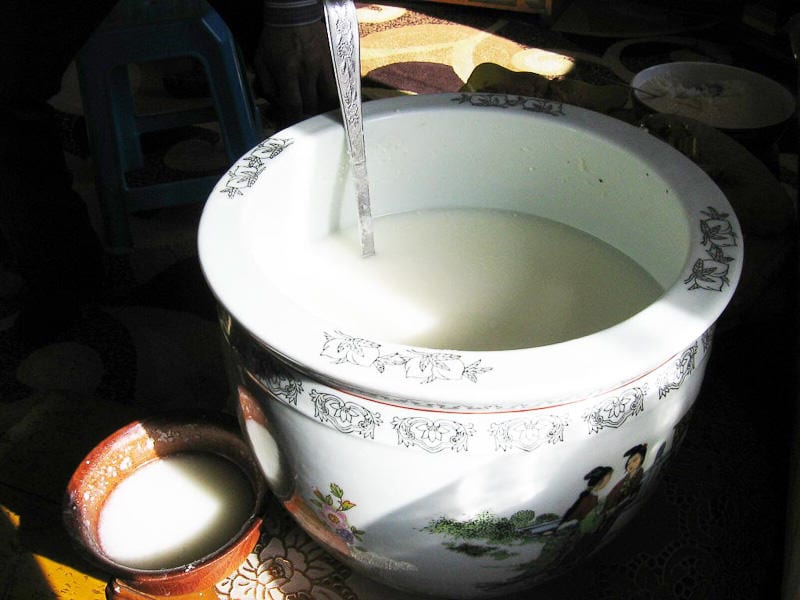
Photo from Reddit
A mildly alcoholic drink made from fermented mare’s milk, Airag has a sour, fizzy taste and is traditionally enjoyed in Mongolia.
22.) Century Egg – China
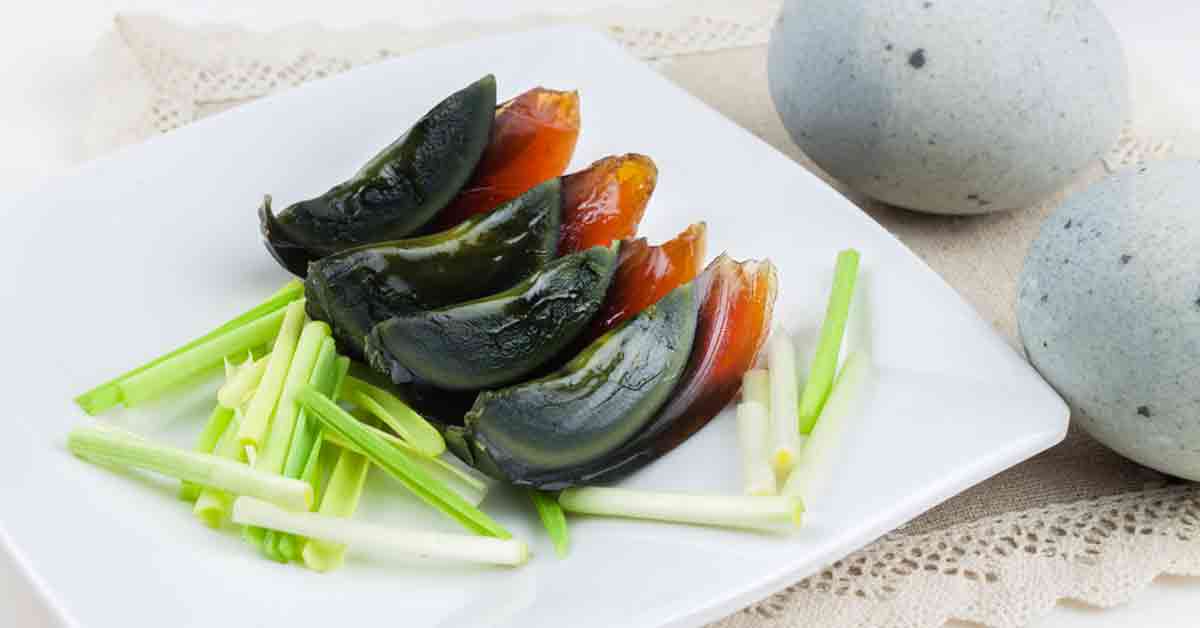
Photo from Reddit
This “100-year-old” egg is actually preserved in a mixture of salt, lime, and ash for a few months, developing a jelly-like white and a creamy, sulfur-scented yolk.
21.) Jellied Moose Nose – Canada

Photo from Unsplash
A Canadian delicacy, jellied moose nose involves boiling the nose until soft, then slicing it to create a gelatinous dish.
20.) Huitlacoche – Mexico
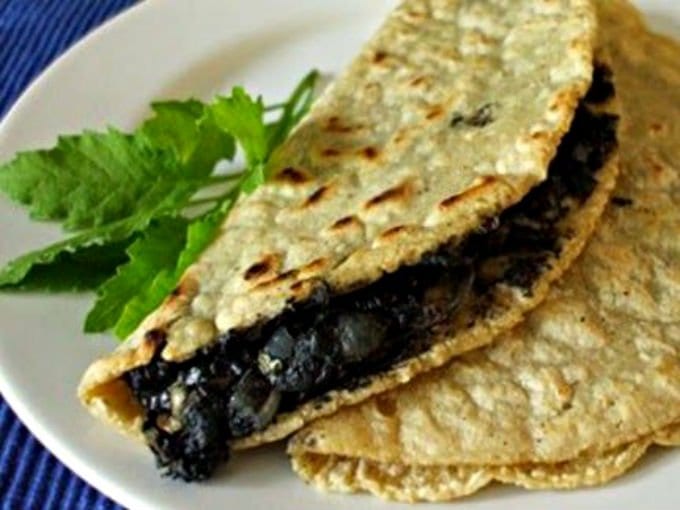
Photo from Reddit
Known as “corn smut” or “Mexican truffle,” this fungus grows on corn and is celebrated as a delicacy in Mexico, often used in soups, tacos, and sauces.
19.) Salo – Ukraine

Photo from Reddit
Salo is cured pork fat, served raw and sliced, sometimes flavored with garlic or herbs. A traditional Ukrainian snack, it’s surprisingly delicious when paired with rye bread and vodka.
18.) Cuy – Peru
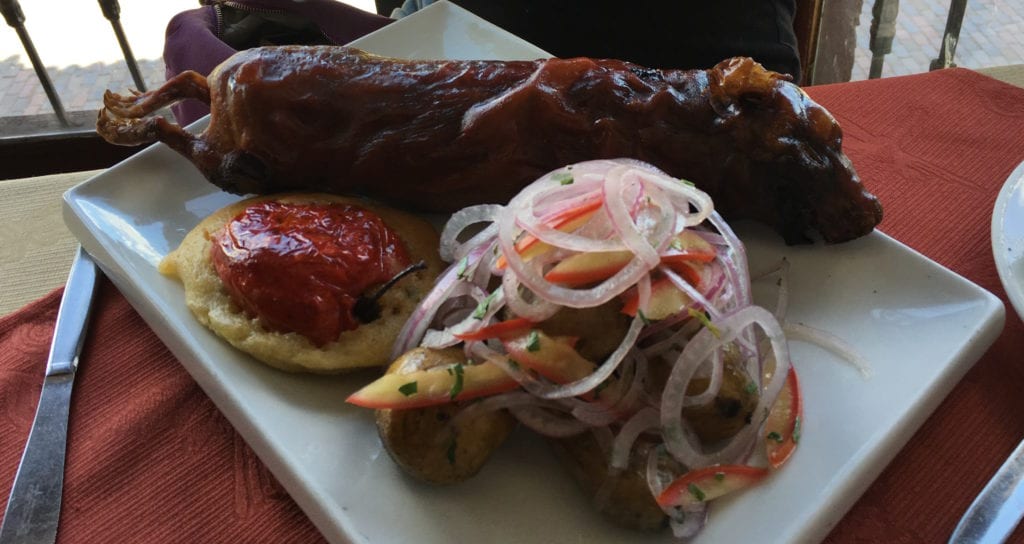
Photo from Reddit
Guinea pig, or cuy, is roasted whole in Peru and resembles a crispy version of pork. It’s a staple in Andean regions.
17.) Sea Cucumber – East Asia

Photo from Unsplash
Popular in Chinese cuisine, this gelatinous marine animal is often simmered and served in soups or stir-fries.
16.) Stargazy Pie – England
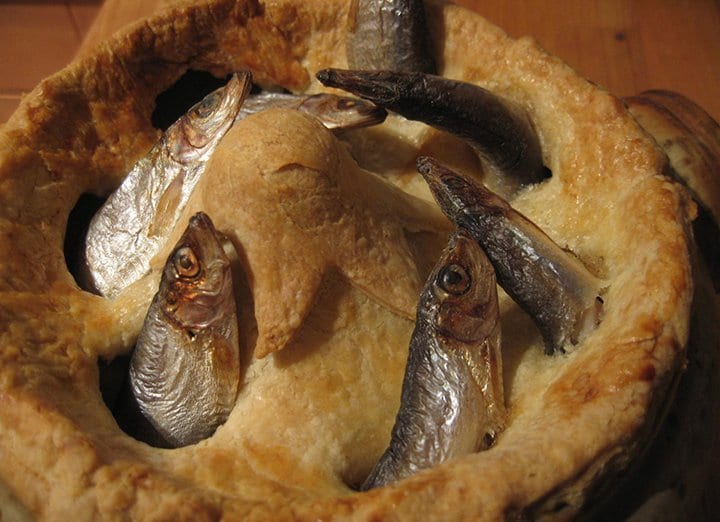
Photo from Reddit
This Cornish dish features whole fish (heads intact) poking out from a pie crust. It’s served on Tom Bawcock’s Eve, celebrating a local fishing hero.
15.) Haggis – Scotland
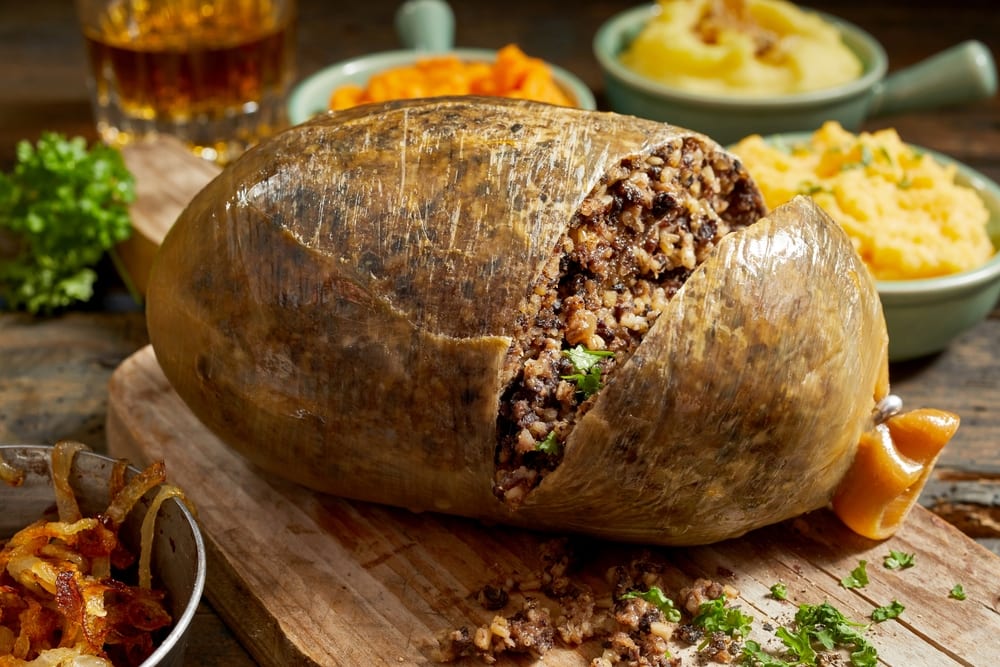
Photo from Unsplash
A savory pudding of sheep’s heart, liver, and lungs cooked inside the stomach, haggis is a classic of Scottish cuisine.
14.) Frog Legs – France and Southeast Asia

Photo from Unsplash
This dish is known for its delicate, chicken-like taste and is enjoyed fried, grilled, or in soup.
13.) Rocky Mountain Oysters – USA

Photo from Reddit
These “oysters” are actually deep-fried bull testicles, often served in parts of the Western U.S. for the adventurous eater.
12.) Black Pudding – UK

Photo from Reddit
A staple in the British breakfast, black pudding is a type of blood sausage made from pork blood, fat, and oatmeal.
11.) Balut – Philippines
A fertilized duck egg with a partially developed embryo, balut is boiled and eaten directly from the shell, often with salt and vinegar.
10.) White Ant Egg Soup – Laos & Thailand
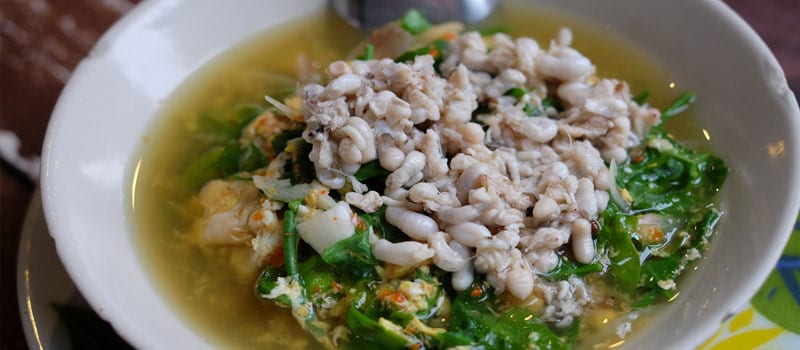
Photo from Reddit
This soup made with white ant eggs and a few baby ants for sourness is a delicacy in Southeast Asia, especially in Laos.
9.) Snake Wine – Southeast Asia

Photo from Reddit
This unique drink contains a whole venomous snake submerged in rice wine, which is said to impart health benefits.
8.) Bird’s Nest Soup – China

Photo from Reddit
A delicacy made from the hardened saliva of swiftlets, this soup is cherished in Chinese cuisine for its reputed health benefits.
7.) Kangaroo – Australia

Photo from Unsplash
In Australia, kangaroo meat is a lean, sustainable source of protein, enjoyed grilled or in pies.
6.) Lutefisk – Norway

Photo from Unsplash
This gelatinous fish is made by curing dried cod with lye, creating a jelly-like texture and distinctive taste.
5.) Turtle Soup – Southeast Asia and Southern USA

Photo from Reddit
This rich, flavorful soup made from turtle meat is enjoyed in Southeast Asia and parts of the U.S.
4.) Fried Brain Sandwich – USA

Photo from Reddit
Popular in parts of Indiana, this fried calf brain sandwich is served on a bun with onions and mustard.
3.) Bosintang – Korea
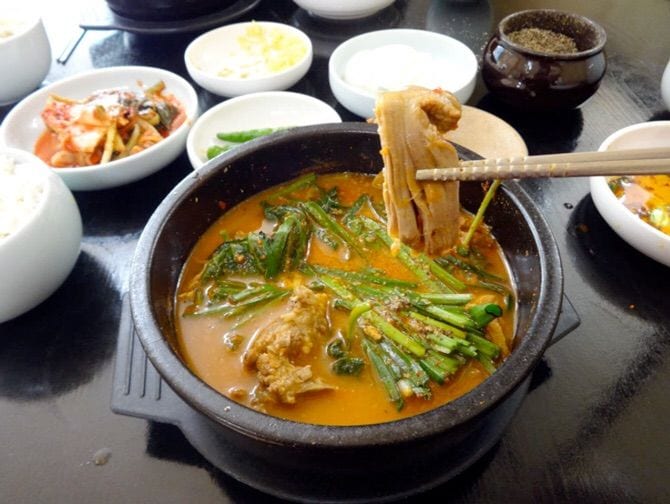
Photo from Reddit
A traditional Korean stew made with dog meat and a mix of herbs, it’s not commonly found on menus today but still exists in rural areas.
2.) Muktuk – Greenland
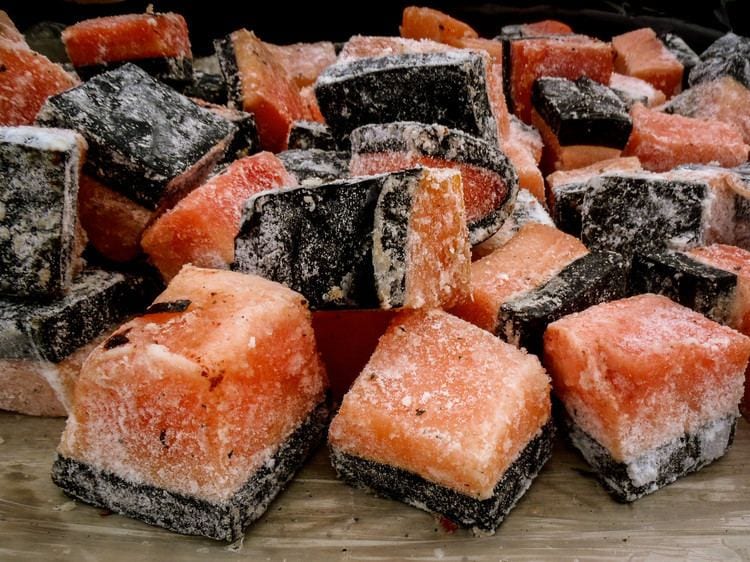
Photo from Reddit
Muktuk consists of whale skin and blubber, often eaten raw or pickled and known for its chewy texture.
1.) Sheep’s Head – Morocco and Norway

Photo from Unsplash
In these cultures, a whole sheep’s head is cooked and served, teeth and all. Known as “smalahove” in Norway, it’s a unique experience in each country’s cuisine.
Would you try any of these unusual delicacies? From fermented fish to adventurous meats, the culinary world is filled with dishes that push boundaries.





